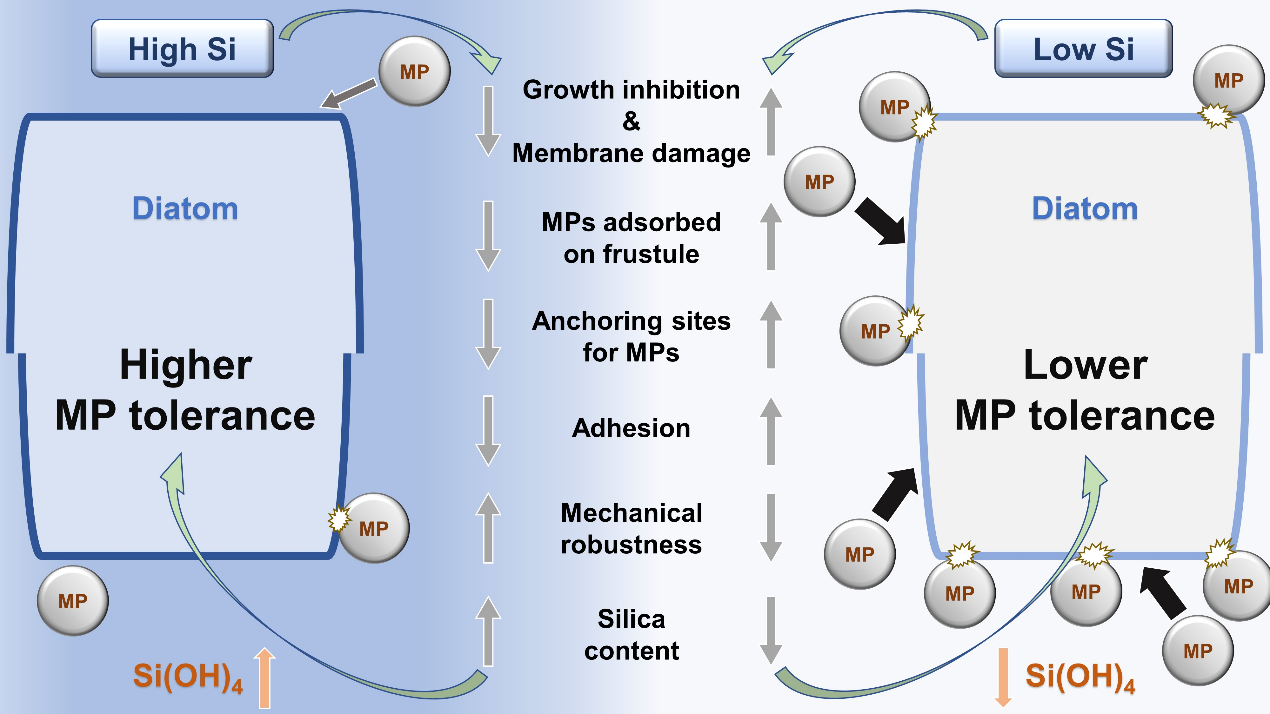Recently, Prof. Pan Ke from the Institute for Advanced Study at Shenzhen University published a research paper titled “Silicon Limitation Impairs the Tolerance of Marine Diatoms to Pristine Microplastics” (DOI: 10.1021/acs.est.2c09305) in the authoritative journal “Environmental Science & Technology” in the field of environmental science (IF: 11.357; JCR Q1). The paper reveals the changes in the tolerance of marine diatoms to microplastics under dynamic nutritional conditions. The first author of the article is PhD student Mr. Fengyuan Chen (SZU-HKUST Joint PhD Program in Marine Environmental Science), and the corresponding author is Prof. Pan Ke.
Marine diatoms are currently facing increasing threats from microplastic pollution that is intertwined with the disturbed nutrient stoichiometry in seawater. The effects of nutrient imbalances such as silicon (Si) limitation on the interactions between diatoms and microplastics (MPs) remain poorly understood. In contrast to previous studies which mainly focused on microplastic toxicity, this study emphasizes how Si availability affects nano-scale interactions between pristine polystyrene MPs and diatom surfaces. Results showed that Si-starved cells were less tolerant to microplastic toxicity than the Si-enriched counterparts. Si limitation significantly changed the configuration and chemical composition of the perforated frustules, forming less negatively-charged, more adhesive, and mechanically weaker cells. All of these changes facilitated the adsorption and hetero-aggregation between the diatom cells and MPs, and compromised the diatoms’ resistance to microplastic attack. This study provides novel insights into the effects of pristine MPs in the marine environment under the context of dynamic nutrient conditions.
This research was financially supported by the Science and Technology Innovation Commission of Shenzhen (JCYJ20180507182227257), the National Natural Science Foundation of China (41976140, 42076148), the Guangxi Key R&D Program of China (GUIKE AB20297018), the Guangdong Basic and Applied Basic Research Foundation (2019A1515011630), and the Innovation Team Project of Universities in Guangdong Province (No. 2020KCXTD023).
The link to this publication:
https://pubs.acs.org/doi/10.1021/acs.est.2c09305



